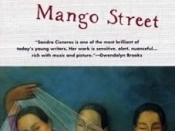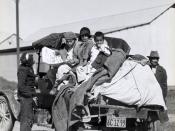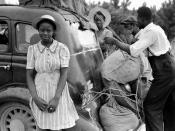Stereotypes from the setting Upon reading "The House on Mango Street," by Sandra Cisneros, an image is formed of the families class status. The family is presented as Hispanic, migrant workers, poor, family oriented, and hard working. This classification is called stereotyping. Often times, stereotypes are formed, just by the setting of a story. In "The House on Mango Street," these stereotypes are presented in an image of three houses.
In the first house on Loomis Street, Cisneros presents the family as being very poor. This stereotype is presented, as the narrator says "we had to leave the flat on Loomis quick. The water pipes broke and the landlord wouldn't fix them because the house was too old. We had to leave fast. We were using the washroom next door and carrying water over in empty milk gallons" (Paragraph 3). After reading this paragraph, the reader quickly stereotypes the family, by their definition of being poor.
To someone who is in living in worse living conditions, the family may appear to them as being well off. Americans are socialized into society, with an assumption of what is considered poor. Society's standards are based on the amount of money we have, and often times are classified into class.
Also in the flat on Loomis Street, the narrator feels insulted by the nuns comment. As the nun questions that the narrator lives in the flat, she takes it harshly. What the nun meant by her comment is debatable, though it is most likely that the nun meant it in a cruel way. This is represented as the child looks where the nun is pointing. She noticed "the paint peeling, wooden bars Papa had nailed on the windows so we wouldn't fall out" (Paragraph 10). It is possible...


